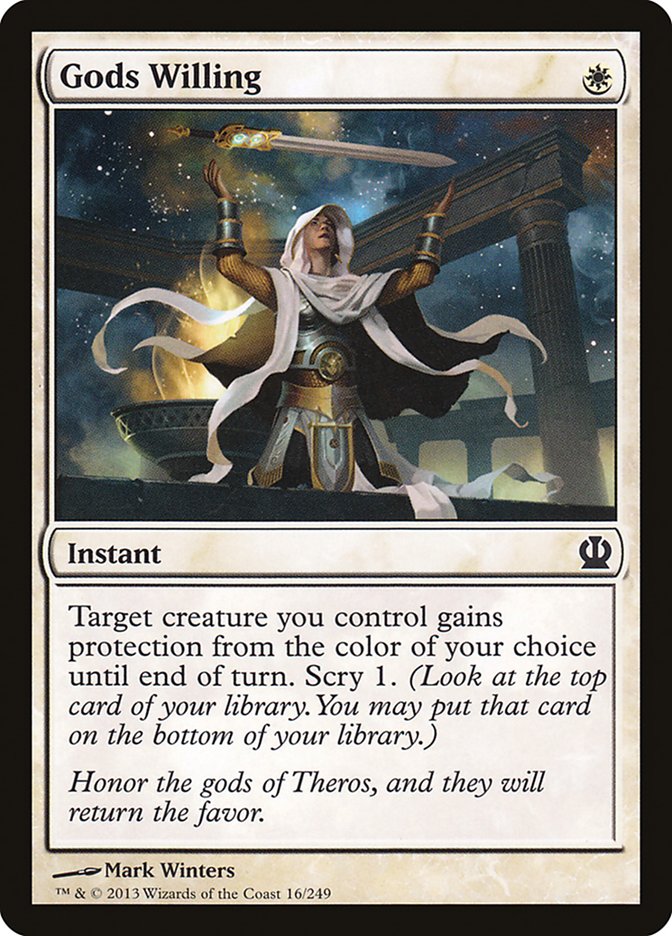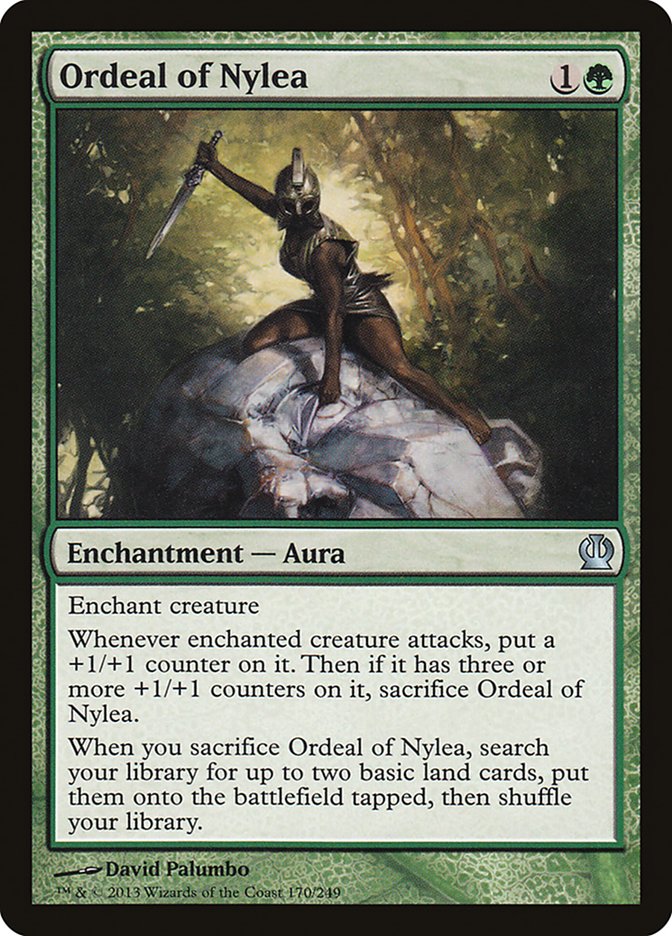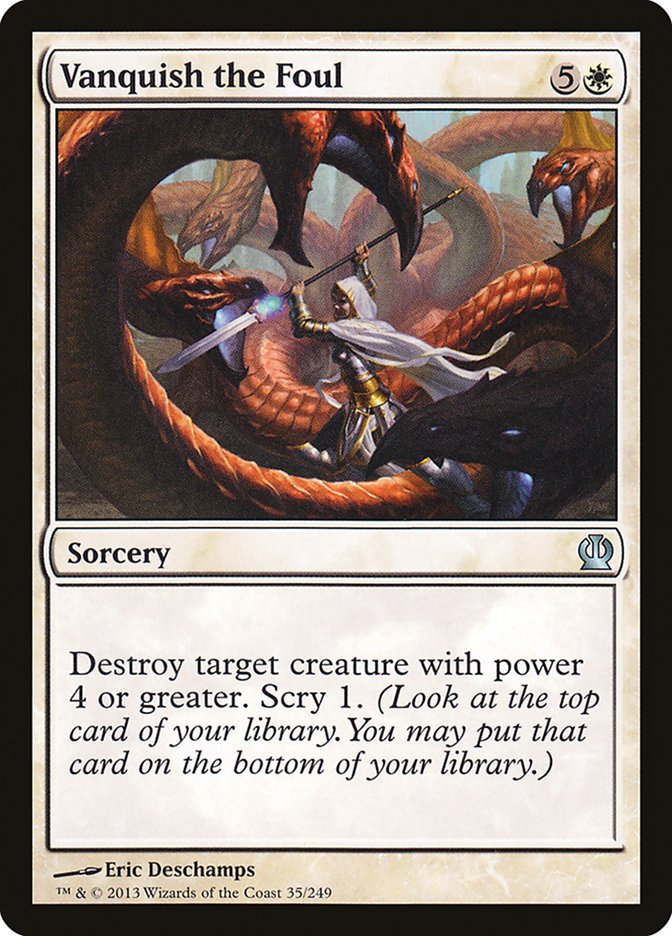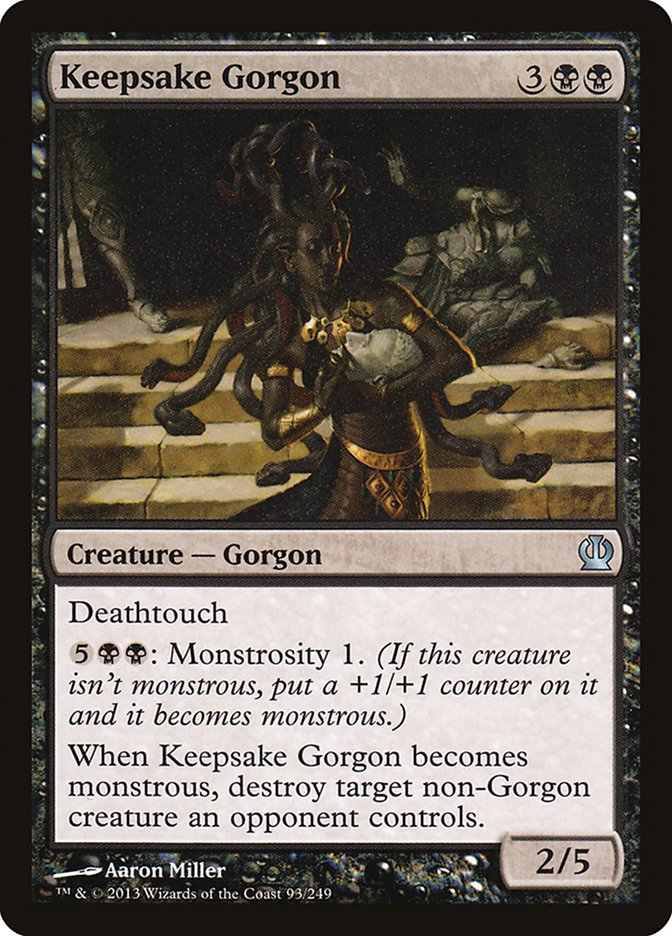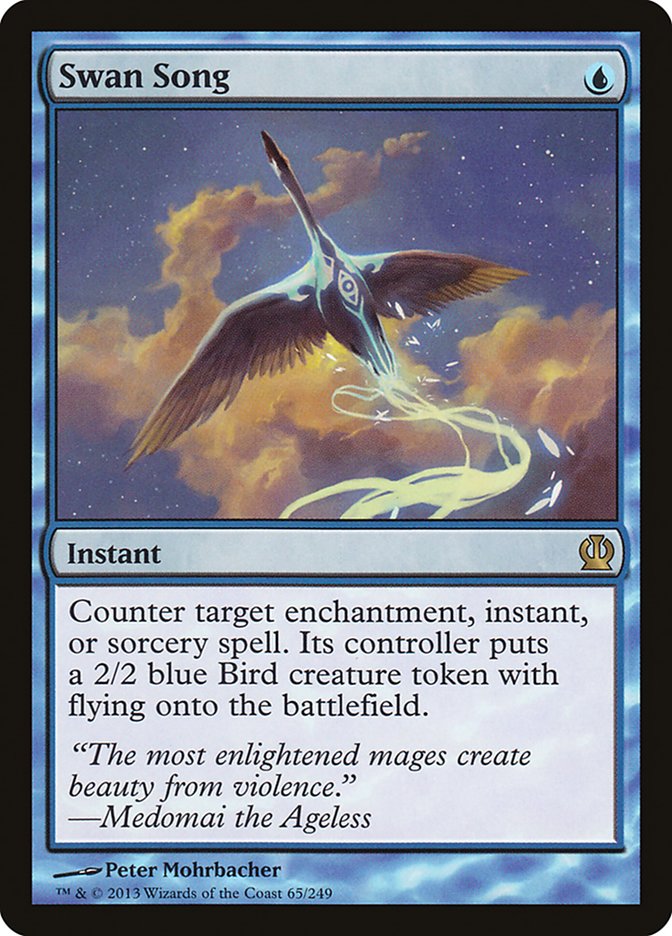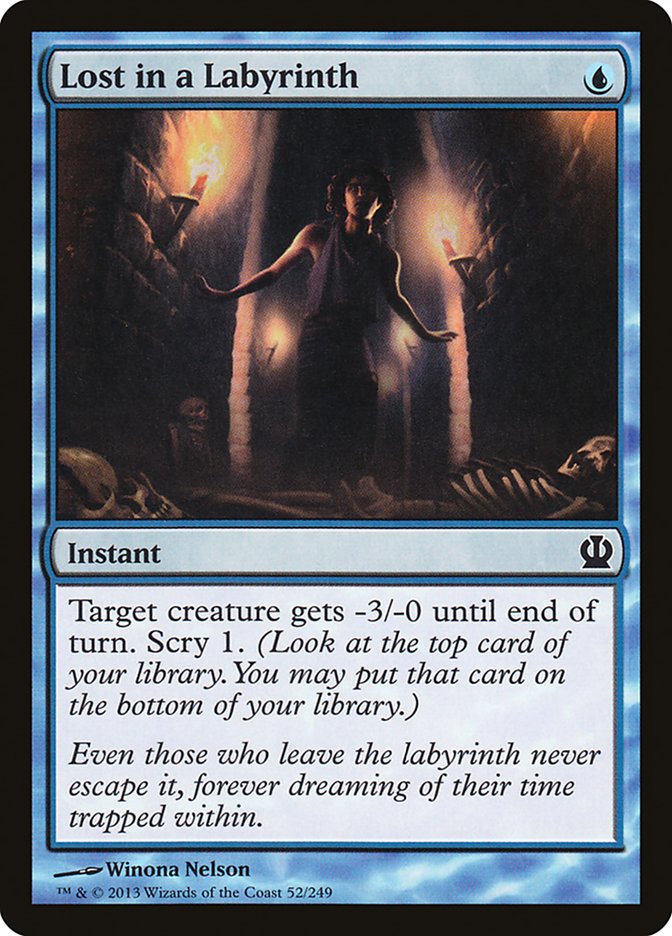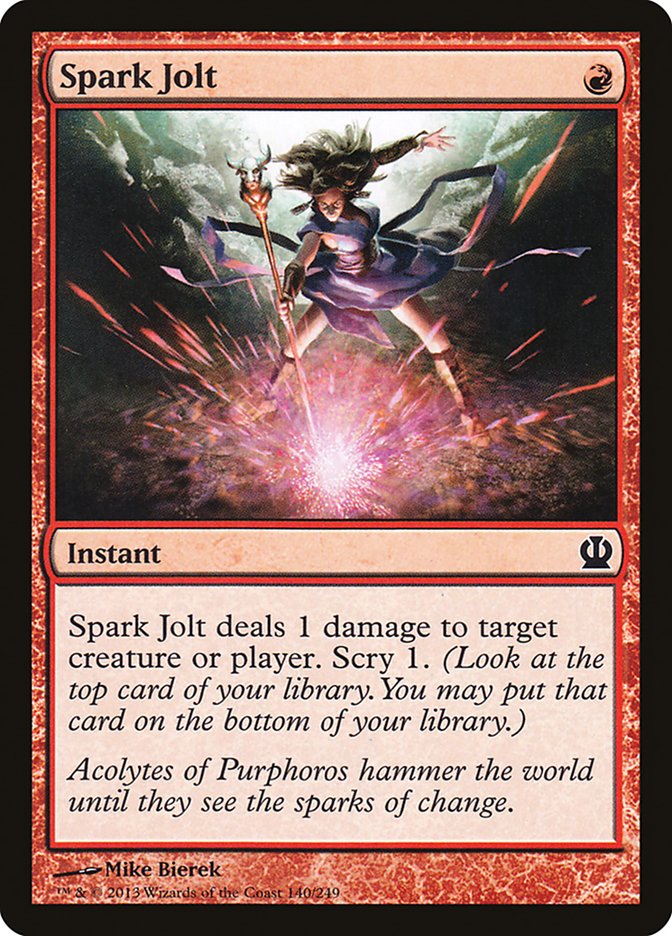I know that Limited articles aren’t often that popular, but this is one of those times where I’m creating an article that I wish existed when I was coming up in the game. Without a bevy of experience, it’s often hard for players of any skill level to come up with unique original plays on the fly. More often than not, if a player makes a play that steps outside of the norm, it’s because they’ve seen it [or something similar] done before.
Rules nuances and exploits are often hard to catch in game because a player is more concerned with general strategy decisions rather than looking for specific tactical maneuvers. Of course, this isn’t always true, but it does have weight to it.
When I was drafting every week at my local game store, whenever I did come up with one of these unique plays I told the players that were better than me that I was learning from my line. Bursting with pride at the cool stack manipulation or weird interaction I abused, I was often met with shrugs as if the line I thought was brilliant was actually commonplace or at the very least a known quantity. I remember wondering how many of these little tricks everyone else knew about that I had to learn on my own. How much practice and focus would it take, and how many would I still miss anyway? There was plenty of material online about different archetypes and relative power levels between cards, but why wasn’t there a resource for the higher-level and more intricate tactics in the given formats?
So rather than having everyone have to learn on their own, either through playing and stumbling upon them or by hearing about certain interactions through the grapevine, I’d like to ramble about some cool plays, unique card choices, and the like in regards to Theros Limited.
Manipulating Gods Willing
One of the more dynamic cards in the set, Gods Willing is a very cheap instant that has a million uses. Most know about the more basic uses, such as saving a creature from dying in combat or fizzling a removal spell. Getting through a color’s worth of blockers is another relatively normal use.
Now, there are a couple of spots that Gods Willing can be used to even greater effect using these same abilities. One is to use it against a combat trick that is either on a first (or double) striker or gives it first strike, like Coordinated Assault. This way you’re not only saving your creature but still eating theirs. This is called "retricking" and is a very profitable play in Limited Magic. Often a combat trick is an attempt to create either a tidy two-for-one or a profitable one-for-one. A retrick however is a card that may not have much application straight up but can be an ultimate trump in such situations. The most common is "in response to your pump spell, use my removal spell" but there are more subtle ways to create these situations for yourself as well.
A nice way to get that setup is against Time to Feed. Normally Time to Feed will be used on a green creature to fight yours, in which case the best you can do is fizzle it with Gods Willing. However, on the rare occasion where a nongreen creature is fighting yours, you can give the creature protection from that color instead of from green. That way the Time to Feed still resolves and your creatures fight, but yours won’t take any damage (and will have protection from that creature’s color for blocking purposes).
I know I promised you guys some sweet unique plays and have so far talked about simple Limited theory and tried-and-true tactics, so let’s get to the good stuff. My personal favorite use of Gods Willing is to purposefully knock your own bestow creature off its post.
Say you put a Celestial Archon on a Bronze Sable and attack for six in the air. When your opponent swings back in an attempt to race, you Gods Willing your weasel naming white. The Archon falls off, becomes a creature, and ambushes your opponent with its 4/4 first-striking body.
This trick also works on offense. Imagine the fairly common scenario where your opponent is at one life with exactly as many potential blockers as you have potential attackers. Their attack back is threatening lethal. You have a Gods Willing, but the opponent’s creature base is spread out enough color-wise that you can’t use it to force through the last point of damage. Or can you?
Something that not many realize is that if you have a creature bestowed on another and the host creature dies the bestow guy isn’t "entering play" but is rather just becoming a creature instead of an Aura. That means that if it has been in play since the start of your last turn it’s not affected by summoning sickness. Beyond meaning that you can attack with the bestow guy if the host dies (assuming it has been in play), it also means that you can Gods Willing the host, naming the color of the bestow, and give yourself an additional attacker!
Playing against Gods Willing can often be a frustrating experience, as your opponent invests all these resources into creating Voltron and will be blown out by your Voyage’s End only to get it countered on the cheap (and they even get to scry!). Here are a few words on how to combat the common.
The most obvious way would be to not allow it to be used at all, but that’s generally difficult to accomplish. More realistically, what you’re going to want to do is minimize its impact. You can do this by making the timing inconvenient for your opponent, either putting a hole in their curve on a key turn or by making the scry redundant, such as after they scry a card to the top with another effect. That doesn’t just go for Gods Willing either—anytime you can blank a scry, you’re profiting some fraction of an effective card in advantage.
Something to avoid if possible is allowing them to use it to save a heroic creature, getting additional value. As for actual tactics to combat Gods Willing, try using their own protection against them. Say your opponent is attacking you with a Centaur Courser bestowed with a Thassa’s Emissary. If you use a Divine Verdict, then you’re going to be smoked by the Gods Willing. However, if you use a Griptide, then the Emissary would fall off if they try to shield Voltron from the bounce spell. You can do this in combat and threaten to make it extremely unfavorable for them if they try to fight over your spell.
They think that with Gods Willing up they’re safe to play their Dragon Mantle and draw a card, but if your removal spell is red, then that card will never come for them.
Getting Scrappy With Heroic
Heroic is an extremely powerful ability that snowballs quickly but often leads to higher variance in deckbuilding and awkward types of openers. There are a good number of nut heroic decks and draws, but there are always times where it doesn’t quite work out for one reason or another. Anyone who has done a decent number of Theros drafts knows generally what works and what doesn’t, what cards you want and what cards you don’t, and how to put Hopeful Eidolon on Wingsteed Rider and enjoy the free win. However, there are some small tricks that can help push unfavorable positions into wins through scrappy Magic.
Scrappy Magic, or small-ball Magic, to me means eschewing just about every form of advantage measurement or resource counting in order to manufacture a win despite a seemingly significant disadvantage. A disadvantage like multiple mulligans, having a pool that is relatively much worse, blundering or being blown out early, etc.
Getting scrappy means using everything you have available to you. I’ll consider discussing this subject further in a separate article if there is sufficient interest, but for now let’s get to the relevant stuff: tactics. Getting scrappy often means utilizing strange tactics—including willingly giving up card advantage—in order to gain an edge elsewhere, almost always in the racing department.
In the context of this, we are mostly talking about throwing cards at heroic creatures and hoping they carry us to victory. One way to do this is by "killing" your own creature, abusing the way the stack works.
You cast Last Breath, targeting your own Wingsteed Rider.
The heroic trigger goes on the stack on top of the Last Breath.
The heroic trigger resolves first, making the Wingsteed Rider a 3/3.
Then the Last Breath goes to resolve but sees that Wingsteed Rider is too big and fizzles.
Attack for three instead of two! (Being down a card and two mana.)
The note on that last line is important, as you have to recognize that this type of thing is going to be an incredibly terrible play a huge percentage of the time and you have to have very specific reasons to be doing it in order to justify that type of wasting of resources.
A similar trick can be used with Centaur Battlemaster and Lash of the Whip. It goes up to a 6/6 and then down to a 2/2 but only until end of turn. There are multitudes of iterations of this style of heroic gambit.
Using a card like Portent of Betrayal for a heroic trigger and a scry is often better than doing nothing and waiting for the opponent to give you some unlikely opening to use it for unrealistic effect later on.
You can go even deeper for more impactful heroic triggers, such as Phalanx Leader. You can go about outright killing it for the one-shot of the trigger or even getting multiple by casting another spell while the first is still on the stack. If you’re in the mood to throw even more cards away, you can do it by targeting the heroic creature with removal and then countering your own spell (Stymied Hopes your own Voyage’s End or what have you).
What An Ordeal!
While it’s no secret that the uncommon cycle of Ordeals are all very powerful, there are certainly people who haven’t played with them enough to have come upon some of the more unique situations involving them. The first thing to remember is that not all three of the +1/+1 counters need to come from the Ordeal in order to trigger it for the big effect. If you put it on, say, a Wingsteed Rider and then target it one more time, it will trigger the sacrifice on its first attack!
While that all may be elementary for many of you, I now ask you this—how many times have you targeted an opponent’s creature with your Ordeal? I bet not many of you have (and rightfully so), but it does come up! If your opponent has a creature with a couple of counters already on it and then attacks with your Ordeal, their creature will get the counter, sure, but you still control the sacrifice effect. You can use this to dissuade an attack as a pseudo Guard Duty if the bonus is too valuable or threatening. Sometimes it’s worth a +1/+1 counter on their creature to Explosive Vegetation and deploy your hand.
Abusing Bestow
Now that we’ve covered killing your own creatures, it’s time to discuss pumping your opponent’s.
This doesn’t come up very often either—I would say even less than the heroic gambits discussed above. This is because the two cards that make this a good thing are an unplayable uncommon and a mythic rare:
As if she weren’t backbreaking enough, a sequence that I’ve pulled off on more than one occasion with Elspeth is to play her and make some chumpers and then on the next turn bestow an Emissary or something on their small guy and -3 the planeswalker, taking out their team and giving me my bestow guy back in the form of a creature.
As for Vanquish, it was a sideboard choice for a G/B deck with some fat, but an unexpected Agent of Fates spelled disaster for my G/W creature deck. Now I can’t even cast my Observant Alseid, and this Vanquish the Foul is going to rot in my hand while I die to this 3/2 body—hey, wait a minute!
For the above uses, you would obviously prefer to use a bestow creature to develop your board while facing an attack from a huge creature and then doing nothing the next turn. However, in a pinch, Feral Invocation can be used. Savage Surge, Battlewise Valor, and Titan’s Strength also work in this spot but will cost a lot of mana if used in conjunction with Vanquish.
As for a trick that only works with bestow, Nimbus Naiad their creature in order to Shredding Winds it is pretty cute (like the Soaring Seacliff into Oran-Rief Recluse hook of old). This is one that I have yet to do myself but was brought to my attention, and I absolutely love it. It kind of feels like you’re skeet shooting. Pull!
If you build a big bad Daxos of Meletis and get road blocked by a deathtoucher—or better yet (both flavor and gameplay-wise) a Guardians of Meletis—you can grow them out of range and get in with your Geistveil Specter Adept.
I’m A Monster!
Monstrosity isn’t as dynamic in its tactical applications as some of the other abilities and cycles, but there are a couple of things that I want to throw out there. For starters, if there’s a creature with a monstrosity trigger, such as Keepsake Gorgon, that doesn’t go off until the monstrosity activation resolves, that means if you remove the Gorgon in response to the seven mana being sunk into it they’ll be tapped down with no giant deathtoucher in play and without having killed a creature. This feels like cheating when it works because the tempo gain is outrageous.
The only other tactical application for monstrosity that I can think of is when you’re R/G (note: not advised) and have Satyr Hedonist chilling in play, threatening to let a key monstrosity go off and giving your opponent a hard time in combat.
Scry, Baby, Scry
I’ve already mentioned how you can try forcing the hand of a scry card when they’ve already seen their top card, but there are a couple of other ways to mess with it. You can also use things like Returned Centaur or Thassa’s Bounty to deny them what they wanted to keep on top.
Something that I see people miss with scry instants is that they don’t upkeep them often enough. If you know that you’re going to spend your turn casting that Artisan’s Sorrow, you might as well do it on your upkeep and filter a draw sooner.
Understanding Swan Song
Swan Song is a card that I like a good deal in Theros Limited that no one else seems to have any respect for. I understand the reasons for it. On the face of it, giving your opponent a 2/2 flier is usually frowned upon, as the spell you’re "countering" is unlikely to be all that much better than a 2/2 flier to begin with. This assessment operates under two false assumptions: 1. that you’re countering any old thing with it, and 2. that they’re the one that gets the swan.
Once it was deemed "unplayable," it never really got played with. Not to mention that since it’s rare it’s not even opened all that often. Without any experience to refute the original prognosis, it has stayed mostly in the shadows of the sideboard.
Until this very day!
First things first, you don’t have to counter their spells. I would say in my [fairly extensive] experience with it, I counter my own spell about a third of the time. The most common way is by pulling off a heroic gambit I discussed earlier, where you use something like a removal spell to trigger heroic and then counter your own spell to keep your guy around. Swan Song is ideal for this because not only is it super cheap to make it easier to spend more expensive spells for this trick but you get a 2/2 flier out of the deal so it’s like you’re only investing (read: throwing away) one card instead of two into the heroic trigger.
Besides that trick, the other use for Swan Song on your own spell is just as an escape hatch. Say that you use a removal spell on a creature and in response they save it with Gods Willing. Instead of killing their creature and giving them a swan, you can leave them with their creature and get the Bird yourself. While this isn’t the most efficient use of the card, it’s just an example of a way you can ditch it for some value when it’s not good.
However, the upside of when Swan Song is good is very high. A lot of this format is about snowballing and building Voltron. Being able to protect your investments, be it through heroic or bestow (or both), is a very valuable thing. With such a cheap casting cost, you don’t have to hold up and hinder your development just in case they have something; instead, you can continue bestowing and whatnot to your heart’s content with backup the whole way. If you look at Swan Song in purely card-economy terms, of course it will be underwhelming. But if you look at it in terms of mana efficiency, you start to see its true power. You’ll rarely be countering anything that costs less than four and will often be spiking six mana haymakers like Sea Gods Revenge.
There are certainly decks that Swan Song is terrible in. Anything that isn’t Voltroning won’t have much to protect, making a 2/2 flier a more impactful body.
There are certainly decks that Swan Song is terrible against. Aggressive decks, anything whose top end is creatures rather than spells, and so on.
But there are certainly matchups where it will be a windmill ham slam due to a lot of valuable and expensive things to counter.
And there are certainly decks that can utilize it to its maximum, either because they have hefty investments to protect or can minimize the impact of a 2/2 flying token.
If you’re not ready to start jamming it into your decks, I understand. All I ask is that at the very least you give it some consideration from the sideboard
Boon Is A Boon
I’ve already discussed retricking being a useful sort-of level-two type of tactical thing in Limited. Well, Boon of Erebos is one heck of a retrick.
Boon is a card that I see a lot of people cut or barely play, and I think it is one of the black cards that I actively look for and happily include in my pile. The main reason for this is that anything that costs a single mana is worth considering because of the strength of being able to do multiple things in the same turn and patch up holes in your curve.
The thing that makes Boon of Erebos special is that it trumps a huge percentage of the other tricks in the format. Say that a 2/2 is grappling with another 2/2. If the opponent uses Feral Invocation, Savage Surge, Battlewise Valor, Titan’s Strength, and even bestowing Boon Satyr, all get crushed by Boon of Erebos.
And if you’re not in a situation to blow them out with Boon as a retrick? Then it serves as a more-than-fine combat trick itself, cheap and inconspicuous and very effective. It can even do a bad Gods Willing impression and save a guy from a lot of the removal in the format!
It also conveniently shores up a lot of the problems that black has in the early to midgame and works well with its cards. The creatures are weak and don’t tussle well, so Boon helps you trade cards off and get to the mid to late game where black thrives. It even gets you to that stage with your devotion intact, which is often very important. It teams up with Baleful Eidolon quite well too.
The Onion That Is Returned Centaur
While this segment doesn’t quite fit the theme of my article, I want to give a little shout out to Returned Centaur, a card that doesn’t get much credit for being all that interesting or even any good. I’m not saying that he’s the best card of all time. In fact, I cut him extremely often. However, I do want to throw a couple of things out there for your consideration.
Milling yourself for four can often be quite profitable with such things as Nemesis of Mortals, Pharika’s Mender, Rescue From The Underworld, March of The Returned, and Mnemonic Wall. Milling anyone is good with Nighthowler. Milling them can be good for increased Psychic Intrusion options, counteracting a scry, in conjunction with Griptide to remove a creature permanently, and simply for information.
A lot of these things can be said for Thassa’s Bounty as well. It’s a fine sideboard card in its own right, being quite good in grindy matchups, but it being less playable and more expensive makes me think of Returned Centaur first.
There are also times where you play against a green deck with a lot of 3/3s and your Felhide Minotaurs could use some glute implants post-board.
Sideboard Tech
As I have said many times before, I strongly feel that people don’t sideboard nearly enough in Limited. That may be another one of those things where I may write a whole article about it someday, but for now we’ll leave it as that and get to some specific cards to look for and use.
The color hate cards are not drafted highly enough I feel. They are all fantastic (except for Peak Eruption), and with the high playable depth of Theros, you can take sideboard cards relatively aggressively. As for the self-hate color hosers, when you take them you are not only getting a really sweet sideboard card but also hating out a card that is by definition going to be good against you.
Oftentimes Peak Eruption is terrible, but I’ve even boarded that one in before. I had two of them and a Demolish against a R/W Midrange deck with lots of expensive monstrosity creatures and a couple of Demolish targets. They even had Chained to the Rocks, which is a pretty big blowout to explode the rocks and free Prometheus. Just another example of never writing something off as unplayable and missing potential applications.
Another type of card that is very useful is all of the Naturalizes. There are a handful in the set, and they seem to go around the table more often than not. I’m happy to be taking my third piece of enchantment destruction in Theros and regularly maindeck one or two. The tactics you can pull off with the instant-speed ones against bestowed creatures are all extremely profitable, such as shrinking their guy and then eating it or putting damage on a creature and then removing the bestow, leaving the host with damage on it to die since it’s too late for Gods Willing.
One of the cooler pieces of sideboard tech I’ve come across in Theros is using Rescue From The Underworld to counteract Akroan Horse. The fact that it’s an instant is nice, as you can theoretically prevent them from even getting a single Soldier. But that’s not the cool part. The cool part is that you can sacrifice the donated Horse to get a creature back. And then the Horse comes back too, but this time under your control with a Donate trigger.
Regifting after the holiday season at its finest. Enjoy your Horse and thanks for the Soldiers!
Totally Lost in a Labyrinth
Lost in a Labyrinth is a card that I have played more copies of than anyone else in the world I’m fairly certain. I draft a lot of the thirteen-land heroic aggro deck, and a problem that is unique to that deck alone in Theros is the ability to come up with enough playables. This is because your scope of what is playable is extremely narrowed (only U/W or R/W, nothing over three mana) plus you need to come up with 27 playables instead of 23.
Lost in a Labyrinth is a card that often steps in at this point and serves admirably. It makes your 2/2 eat their 2/2 or can give you a heroic trigger and a scry. While it may be inconvenient that you "miss" a point of damage because you can’t heroic your Wingsteed Rider with it until any point after damage, you get to up your count of cheap things that target and get all of those meaningful heroic triggers. All this for the low, low price of a single mana, meaning you can do multiple things, which is vital for this type of deck.
Besides in U/W Heroic, I also play it when I have a lot of creatures that would otherwise be looking to trade, such as Baleful Eidolon, or creatures with higher power than toughness that opponents will try to trade up for only to get one-for-oned by Lost in a Lab.
I mentioned its use with deathtouch, but it’s good against deathtouch too. It’s also effective against first strikers and double strikers that think you can’t block profitably. The number being -3 is especially nice, as most expect tricks to come in the form of 2s.
It’s also not a bad retrick; though it doesn’t give you the full on two-for-one most of the time, it does save a combat that could’ve gone awry and likely at a tempo gain with a scry attached. Not too shabby.
You know what’s really frustrating? When you’re hungry and can’t find your way home for dinner. Time to Feed is often countered for value by Lost in a Labyrinth, and god save them if they were trying to two-for-one themselves to get rid of a key creature, such as fighting their Bronze Sable with your Fabled Hero.
I’ve even used Lost in a Lab to make it so that my creature was "small" enough to block a Daxos of Meletis. I’m telling you, it does it all!
Bzzt! Spark Jolt!
Spark Jolt is another card that is often used as a coaster and never given a second look, but it is the flipside of Lost in a Labyrinth for the low-land aggressive heroic deck if you go R/W instead of U/W. While not as dynamic, it has its uses and can still be used to grow a Wingsteed Rider or get a Phalanx Leader turned on.
Obviously its sideboard uses are going to be for one-toughness creatures. Deathtouchers are still annoying and get blasted preemptively by the red version. It can be upkeeped, as discussed, unlike Lost in a Labyrinth. It goes to the dome (poke), which while not a huge selling point does come up.
My Only Friend, The End
That does it for me this week. I hope you enjoyed it. We’re at a point where there isn’t much Magic going on and the formats are all a bit stale and/or irrelevant. I usually refer to this as "the offseason" or for writers and content producers "the lull," but with streaming being so popular and the StarCityGames.com Open Series rocking out every weekend, that hardly seems appropriate. I will say that it is the time when people are doing their year in reviews and setting their resolutions for the coming year. I’m not quite sure what my plans are for the coming weeks content-wise, but I’m excited to put some things together.
Happy New Year!

